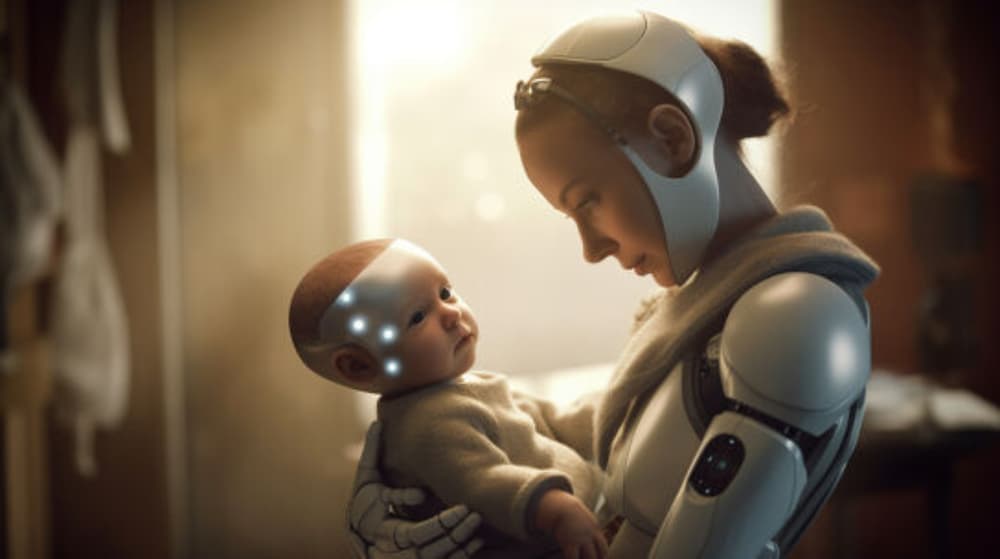Cyborg Care combines robotic efficiency with human empathy in modern healthcare. From lifting patients to delivering meds and offering companionship, assistive robots are teaming up with nurses to bridge staffing gaps and ensure compassionate care.
Cyborg Care: How Human-Robot Collaboration is Transforming Nursing
Written by Sumit Kaushik

Cyborg Care is not replacing nurses. It's enabling them. In the context of booming ageing populations and stress on health care, human-robot collaboration is reconfiguring care spaces as hybrid spaces where the robots do the backbreaking work, take in the mind-numbing or high-risk tasks and the humans have time to make room for empathy, decision-making, and whole-bodied care.
This revolution is seen most prominently in hospitals, nursing homes, and rehabilitation centers, where the physical and psychological burden placed on nurses is disproportionate. Through care integration and automation, Cyborg Care gives an equal, compassionate, and effective health care experience.
How Robots Help Nurses Today
- Lifting & Mobility Assistance: But most physically demanding of nursing activities may be patient positioning itself too. Robot body aides like RIBA (Robot for Interactive Body Assistance) and robot exoskeletons can reposition patients safely, turn, or lift them—removing care givers' back aches and fear of patients.
- Dispensing Medication: Meds, specimens, or supplies zip down hospital hallways in robots like TUG or Moxi and deliver them to departments—leaving nurses to remain at the bedside rather than be dispatched on a mission.
- Here are 3 more:
- Critical Monitoring: Thermal imaging cameras, heart rate monitoring equipment, and AI-powered diagnostic machines in touchless robots track patients' vital signs around the clock and notify human staff only when something goes wrong.
- Companionship and Mental Stimulation for Older Adults: Robotic companions like Paro the seal robot and ElliQ talk to and converse with older adults, trigger them, and play games with them—all preventing loneliness, enhancing mental health, and facilitating dementia care.
- Automating Administration: AI-driven robots chart, register, schedule, and document—recapturing nurses' hours of paperwork a week.
Why It's Hot: Bringing an End to Nurses' Shortage Today
✅ 1. Closing Staff Shortages
Whereas healthcare systems globally are being undermined by nursing shortages, robotic caregivers relieve some of the burden by performing repetitive, time-consuming tasks.
✅ 2. Maintaining Human Dignity
Robots assist patients with care activities such as mobility, cleanliness, and use of the toilet in impeccable and soft way, allowing patients to be independent while maintaining their dignity.
✅ 3. 24/7 Availability
Caregivers burn out and forget, but robots don't—they provide unbroken care 24/7, including emergencies.
✅ 4. Empathy-First Nursing Facilitation
And once routine is left to machines, nurses can work longer hours at what they do best—listening, soothing, evaluating, and healing. The human touch is augmented, not lost.
Technologies empowering Cyborg Care
- AI-Driven Navigation for independent mobility
- Natural Language Processing (NLP) for robot-patient communication
- Computer Vision & Facial Recognition to detect emotion response
- Telepresence & Remote Monitoring to facilitate clinician-family conversation
- Sensors & IoT for easy capture and share of health data
Where Cyborg Care is Going
- AR-Guided Robots to allow nurses to see around corners, around the bend, or project holographic care plans
- Wearable Help-Bots supporting nurses with physical assistance on long shifts
- Emotionally Intelligent Robots sensing stress or mood through facial and vocal scanning
- Multilingual robots to bridge the language gap in multi-cultural caregiving settings
- Home Robots Bring Hospital-Quality Care into the Elderly Patient's Home
Conclusion: Robots Won't Replace Nurses—They'll Redeem Them
Cyborg Care isn't medicine hijacked by machines—it's drudgery, toil, and compassion hijacked by human beings, commandeered by machines. Robots have this shared vision of the future, where they do the heavy lifting and chore work; human beings bring the heart and the healing.
With demands increasing, worldwide staffing decreasing, and populations aging, Cyborg Care is not tomorrow's reality—it's today. The era of dreading machine and charging forward to use it to give more intelligent, better, and more empathetic care is over.